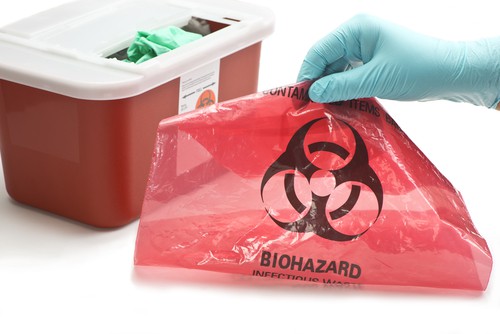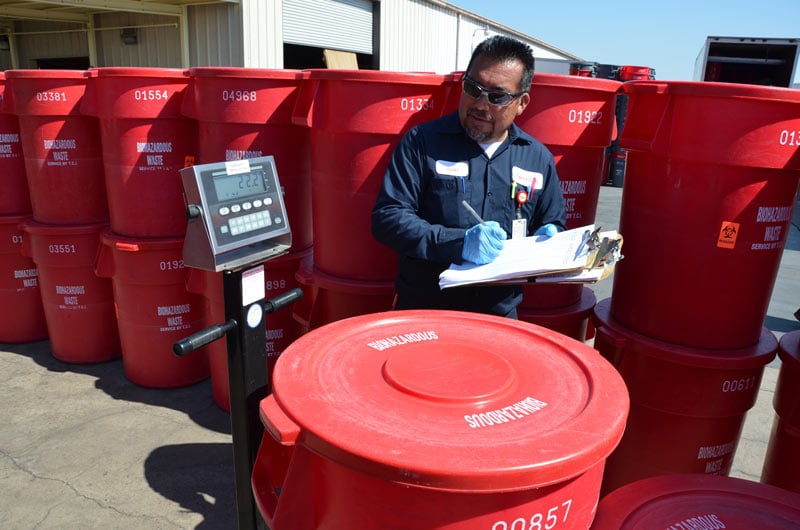Compliance and Laws for Medical Waste Disposal
Conformity and laws for medical waste disposal play an important function in making certain the safety and security and well-being of both healthcare professionals and the general public. Appropriate administration of medical waste is necessary to protect against the spread of infections, protect the environment, and maintain public health. These regulations encompass various aspects, including the classification and segregation of clinical waste, correct storage space and taking care of treatments, as well as transport and disposal techniques.
Value of Conformity
The significance of compliance with policies for medical waste disposal can not be overemphasized. Correct disposal of clinical waste is important for making sure the security and well-being of healthcare employees, people, and the public. Medical waste, which includes items such as made use of needles, polluted gloves, and biomedical waste, can pose significant wellness dangers if not handled and disposed of effectively.
Conformity with policies ensures that clinical waste is managed in a manner that minimizes the possibility for exposure to damaging substances and infectious illness - medical waste removal. It aids stop the spread of infections, such as HIV, hepatitis B and C, and various other bloodborne pathogens. Conformity also plays an essential function in safeguarding the environment by preventing contamination of water resources, soil, and air
Failing to abide by laws can lead to extreme repercussions for medical care facilities, consisting of fines, lawsuit, and damage to their online reputation. Additionally, non-compliance might compromise the health and wellness of healthcare employees, patients, and the neighborhood.
Conformity with regulations for medical garbage disposal calls for adherence to particular standards and methods. These may include correct partition, packaging, labeling, and storage of clinical waste. It additionally includes making use of approved disposal techniques, such as incineration, landfilling, or autoclaving, depending upon the kind of waste.
Governing Agencies and Bodies
Regulatory agencies and bodies play a vital duty in overseeing compliance with policies for clinical garbage disposal. These companies are accountable for establishing standards, standards, and protocols to make certain the correct and risk-free handling of clinical waste. They impose and keep track of compliance to safeguard public health and the environment.
Among one of the most famous regulative agencies in the United States is the Environmental Protection Firm (EPA) The EPA is liable for controling the storage, transportation, therapy, and disposal of clinical waste. They establish guidelines for waste generators, carriers, and therapy facilities to follow, ensuring that all essential preventative measures are taken to avoid the spread of diseases and contamination.
An additional essential regulatory body is the Occupational Safety and Health And Wellness Administration (OSHA) OSHA establishes requirements and regulations to protect employees from work-related risks, consisting of those pertaining to medical waste. WasteX Medical Waste Disposal. They supply standards for the risk-free handling and disposal of clinical waste to safeguard staff members in healthcare centers
In addition to these federal firms, private states additionally have their own regulative bodies that oversee medical garbage disposal. These agencies may have their very own specific guidelines and needs that should be adhered to.

Classification and Partition of Clinical Waste
To guarantee appropriate monitoring of medical waste, it is necessary to classify and segregate it according to established methods and guidelines. medical waste disposal service. Category and partition play an essential function in decreasing the risk of infection, safeguarding the atmosphere, and making certain the safety and security of healthcare workers and the public
Medical waste is categorized right into various groups based upon its possible hazard level. These categories include contagious waste, pathological waste, sharps waste, pharmaceutical waste, chemical waste, and radioactive waste. Each classification needs certain handling, disposal, storage, and transportation approaches to lessen the risk of direct exposure and contamination.
Partition of clinical waste entails separating different kinds of waste at the resource. This procedure makes certain that waste with various threat degrees is not blended, minimizing the capacity for cross-contamination and making disposal procedures much more efficient. Proper partition is attained with the use of color-coded containers and labels, which aid medical care employees and waste management personnel recognize and take care of each kind of waste properly.
In addition to classification and partition, health care facilities have to likewise adhere to local, state, and government policies concerning clinical waste administration. These policies outline details demands for storage, transport, treatment, and last disposal of medical waste, ensuring conformity and maintaining public wellness and security.
Correct Storage Space and Handling Treatments
Appropriate storage and taking care of treatments play an important function in ensuring the compliant and secure administration of medical waste. Clinical waste, which includes things such as utilized syringes, contaminated handwear covers, and ended medications, can present major wellness and environmental risks otherwise handled properly. It is vital for healthcare centers and other generators of medical waste to apply stringent storage space and handling procedures.
To begin with, medical waste needs to be stored in long lasting, leak-proof containers that are particularly made for this purpose. These containers must be classified with the universal biohazard sign and words "medical waste" to clearly show the contents. look at this web-site Furthermore, the containers must be maintained securely near to protect against any prospective leakage or splilling.
Furthermore, it is essential to set apart various kinds of medical waste to avoid cross-contamination. Sharps, such as scalpels and needles, need to be stored in puncture-resistant containers to reduce the danger of injuries - WasteX Medical Waste Disposal. Chemical waste, such as solvents and anti-bacterials, must be saved independently from various other kinds of clinical waste to avoid hazardous exposures or chemical responses

Transportation and Disposal Techniques
Healthcare facilities must make certain the risk-free transportation and proper disposal of their clinical waste to follow policies and shield public wellness. Transport and disposal techniques play a vital role in stopping the spread of transmittable illness and reducing the environmental effect of medical waste.
To transfer clinical waste, healthcare centers need to utilize leak-proof and puncture-resistant containers that are labeled with the biohazard icon. These containers ought to be firmly sealed to protect against any type of leakage during transport. Furthermore, medical care facilities need to establish methods for the transportation procedure, consisting of using dedicated automobiles and trained workers.
When the clinical waste gets to the disposal facility, it undergoes different techniques of therapy - WasteX Medical Waste Disposal. One usual approach is incineration, which entails melting the waste at high temperature levels to destroy pathogens and reduce the volume of waste.
It is important for health care facilities to deal with certified and permitted waste management companies to guarantee proper transportation and disposal of medical waste. These firms have the proficiency and sources to deal with medical waste safely and in compliance with laws.
Verdict
In verdict, compliance with laws for medical waste disposal is of utmost importance to make sure public health and safety and security. In general, adherence to conformity and policies is essential to efficiently take care of medical waste.
Clinical waste, which includes products such as made use of needles, polluted handwear covers, and biomedical waste, can pose severe health dangers if not taken care of and disposed of correctly.
These groups include contagious waste, pathological waste, sharps waste, pharmaceutical waste, chemical waste, and contaminated waste.Segregation of medical waste entails separating different kinds of waste at the resource. Proper partition is attained through the use of color-coded tags and containers, which help health care employees and waste monitoring personnel deal with each type and recognize of waste appropriately.
Chemical waste, such as solvents and disinfectants, must be saved independently from other types of medical waste to avoid hazardous exposures or chemical reactions.